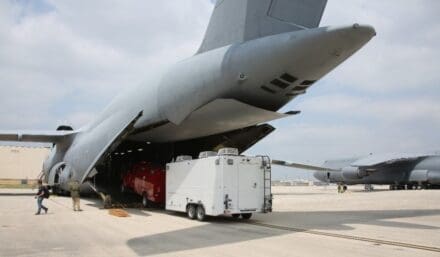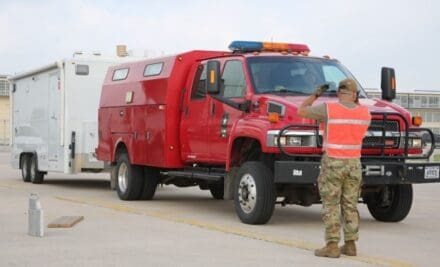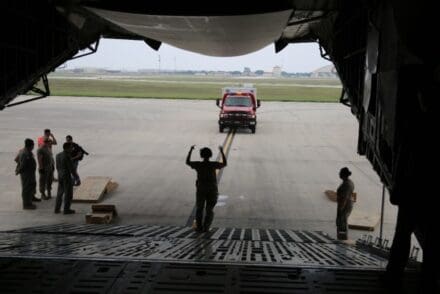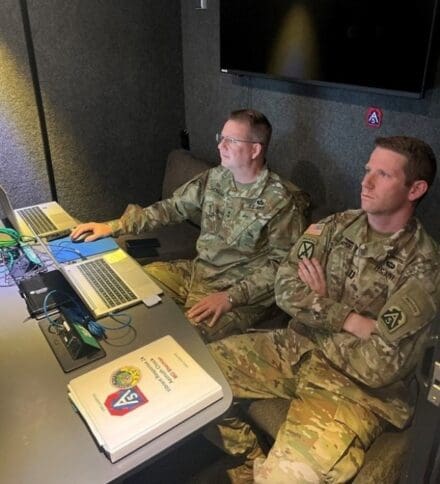SAN ANTONIO, Texas — Communication is critical during times of crisis. The emergency response trailer, or ERT, provides digital communication platforms in austere environments. The Army’s first ERT belongs to Task Force 51, U.S. Army North’s contingency command post. When requested, U.S. Army North provides defense support to civil authorities to support local, state and federal partners during natural or man-made disasters as the command-and-control element. In such a scenario, an ERT can make all the difference.
The ERT is a modern and rugged response platform that replaced the emergency response vehicle, or ERV, as of February 2024. When disaster strikes, ERVs are employed by defense coordinating elements to rapidly respond. Like the ERT, ERVs provide digital communications but with limited capacity.
Engineered from the ground up, the ERT’s capabilities include unclassified and secret communications, Starlink satellite internet compatibility, long-distance radio transmission and increased self-sustainment capabilities. The ERT can also provide limited commercial bandwidth and cellular services to support interagency partners. Tested and certified at Aberdeen Proving Ground, Maryland, the ERT is now the program of record for military specification emergency vehicles.
“The ERT underwent rigorous testing by the Aberdeen team to confirm it could survive intense weather and hazardous terrain while supporting mission requirements,” said Matt Hopper, an ERT operator and subject matter expert. “Task Force 51 is the first unit in the Army to receive the emergency response trailer because of their role as the ARNORTH contingency command post.”
During disaster responses, U.S. Army North deploys Task Force 51, or TF-51, forward to coordinate between the lead federal agency and the military. The ERT allows TF-51 to operate in challenging environments, such as the aftermath of a hurricane.
The task force tested the ERT’s capabilities during Vibrant Response 24, an annual training exercise focused on a nuclear disaster event. The ERT provided secret and unclassified data and voice requirements for TF-51’s operations center, which consisted of 45 computer workstations. Maj. Gen. Scott Sherman, the TF-51 commander and exercise director, conducted daily commander update briefs from the ERT. Regional separation between the outstations were as far as California to Michigan.
“Communication is key to saving lives in a disaster response. Having the ERT and its capabilities allows the military, specifically U.S. Army North and TF-51, the capability to direct assets and resources to the right place and at the right time in support of our partners,” said Sherman.
The ERT’s interior features a control room, conference room and storage room. The conference room can host six seated individuals. Television screens mounted to the walls allow for easy presentation of information. The control room monitors communication output. Additionally, the ERT’s benches can be folded down into two twin beds allowing operators to live out of the vehicle.
The ERT is also imperative to U.S. Army North’s main mission of homeland defense. Close coordination with partners, like the Federal Emergency Management Agency, is important during disaster response and that is exactly what the ERT provides.
“The ERT was designed to withstand challenging environments for DSCA operations but also in the event of a homeland defense scenario. It is highly likely we will encounter a simultaneous DSCA event while defending the homeland; therefore, modernizing our emergency response platforms ensures we are ready if we are called upon,” said Hopper.
By CPT Tara Santon, U.S. Army North Public Affairs





